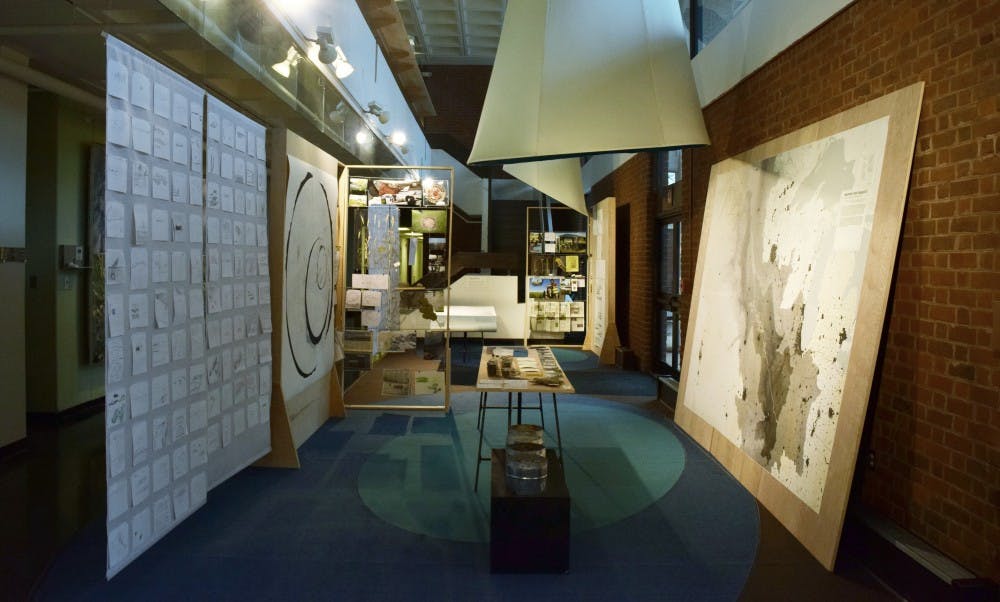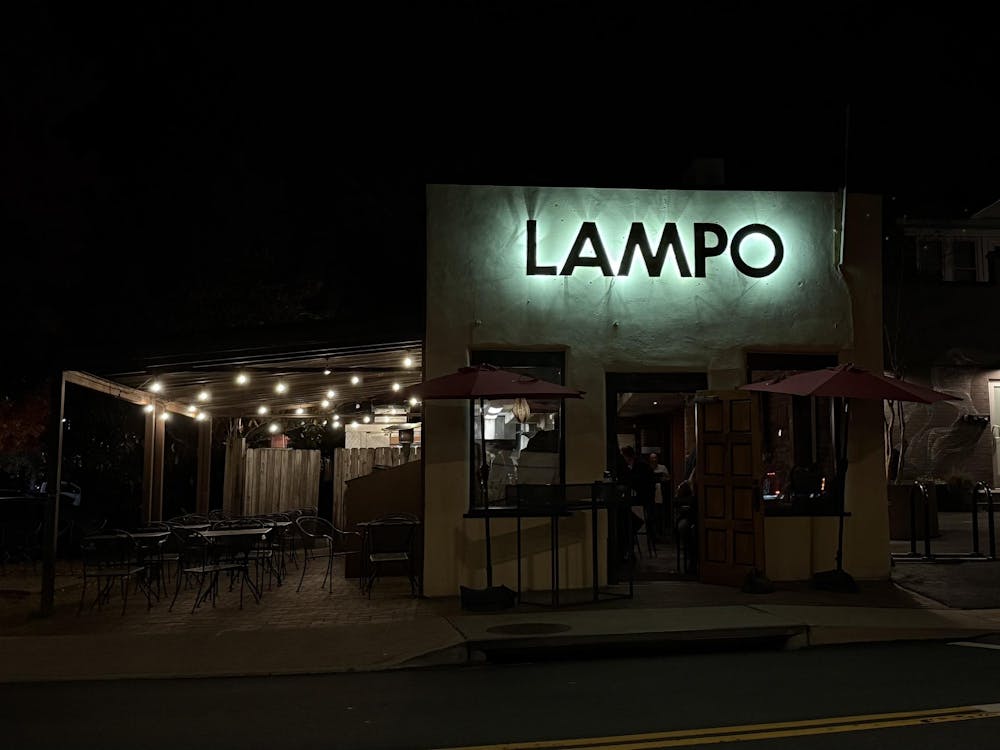In June 2017, five graduate students in the School of Architecture’s Landscape Architecture program spent a month travelling along the Dakota Access Pipeline, exploring its impact on local communities and the environment. Batul Abbas, Claire Casstevens, Luke Harris, Cara Turett and Bonnie Kate Walker recently showcased their work in the Naug, a common area on the first floor of the School of Architecture, in an exhibit entitled "Where is the Dakota Access Pipeline? Drawing Conversation and Encounters with the Ground."
The Dakota Access Pipeline transports crude oil across nearly 1,200 miles from North Dakota to Illinois. While proponents argue that the pipeline is more direct, cost effective and environmentally friendly than other transportation forms such as train or truck, the pipeline has been the source of much contention in recent years. In 2016, thousands of activists and Native American groups gathered at a camp near the Standing Rock Sioux reservation in North Dakota to protest the construction of this pipeline.
The Standing Rock Sioux and other native tribes raised concerns that the underground pipeline would pass through sacred burial grounds. Furthermore, it would travel underneath the Missouri River, the primary drinking water source for the Standing Rock Sioux. Environmental activists additionally urged that fossil fuels such as the oil carried by the pipeline contribute to climate change. The protesters’ camp was cleared out in February 2017, and the pipeline has been operational since June 2017, but many groups are still concerned about its effects.
Inspired by the Standing Rock protests and the interplay between land and politics, Abbas, Casstevens, Harris, Turett and Walker received funding from the School of Architecture’s Benjamin C. Howland Traveling Fellowship to travel to, research and document the landscape surrounding the pipeline.
“The pipeline had been looked at by a lot of journalists and activists but it really is a landscape phenomenon and is a landscape itself,” Walker said. “We just felt like it really needed this other lens that we felt like we had the capacity to give it.”
The five students began their trip and spent most of their time in North Dakota and then followed the pipeline through South Dakota and Iowa. Along the way, they interviewed people who lived near or were affected by the pipeline.
Among others, they spoke with people in the oil industry in the Bakken area of North Dakota, where the oil being transported in the pipeline is drilled. They also visited the site of the protests near the Standing Rock reservation. In Iowa, they met landowners who opposed the pipeline because of private property violations as well as its negative effects on the soil and their crops. Throughout these different places, the group also looked at physical aspects of the pipeline, including its width, depth and materials used in its construction.
Throughout their trip, Abbas, Casstevens, Harris, Turett and Walker made nearly a thousand drawings, as well as took photographs, videos and sound recordings that documented their experiences and the similarities and differences between each place they visited. Their drawings in the exhibit show both the broad landscapes of the areas that they travelled to as well as close-up details such as the plants and soil.
The group felt that they gained valuable insight by experiencing the landscape firsthand rather than researching the pipeline’s effects remotely.
“It’s very easy to abstract from the reality of the material world that you’re designing for or working for,” Harris said. “It was just totally different being surrounded by all the living things — the soil, the water and the weather, the wind. It just totally changed how we work.”
Their work brings light to the issue that the pipeline is often viewed as a utilitarian structure constructed without regard for the landscape and communities that it passes through.
“So much of the way the pipeline is presented and talked about is it’s just this line,” Turett said. “It’s just this pipe that runs from this place to this other place, and it doesn’t really have effects beyond itself. I think a lot of the project was about how the pipeline builds in all these different ways too, like [it] has cultural effects, has effects on the soil, on the plants, on the way that people relate to their landscapes.”
This is not the first time that the Dakota Access Pipeline has been a topic of interest to the University community. In September 2016, the Native American Student Union (NASU) issued a statement of solidarity with the Standing Rock Sioux in opposition to the pipeline. In January 2017, NASU and the Virginia Student Environmental Coalition (VSEC), formerly the Climate Action Society, organized a protest in which over 100 students, faculty and community members demonstrated against the Dakota Access Pipeline and several others.
Since the protest last January, VSEC has organized fundraisers and bake sales to support the resistance against pipelines, specifically pipelines in Virginia including the Atlantic Coast Pipeline and the Mountain Valley Pipeline. The organization is concerned about how the pipelines would increase the carbon footprint and unsustainable fuel use as well as cause harm to local communities.
“It’s really hard to watch people have to grapple with the idea of losing sacred lands and their homes and having to imagine with them what their backyard would look like with bulldozers and heavy equipment and workers who come from out of state,” fourth-year College student and VSEC member Caroline Bray said. “It’s a really scary image and the more people you get to know, the more it makes you want to fight for them and stop the pipelines.”
NASU is also involved in efforts to spread awareness of pipelines’ effects on native tribes. Fourth-year College student and NASU member Evelyn Immonen values the architecture exhibit for its inclusion of multiple perspectives and the importance placed on firsthand experience.
“They actually went out to North Dakota … which is so, so important because you really cannot get an understanding of what’s going on in these places unless you’ve actually been there,” Immonen said. “The land itself is so important, so I really value that.”
Although the exhibit officially closed on Feb. 28, parts of it are still on display in the Naug lounge in the School of Architecture. The group’s work can also be viewed on the Instagram account for their collective, @officeoflivingthings.







